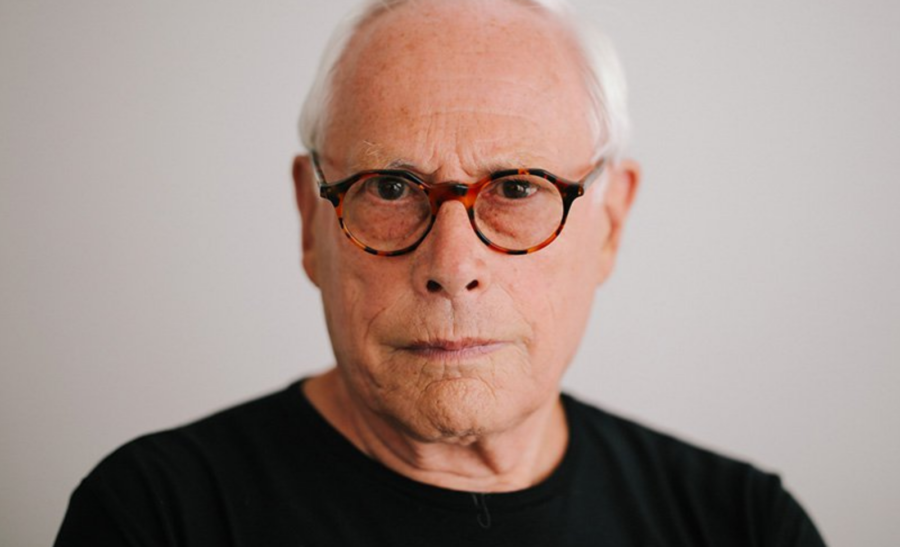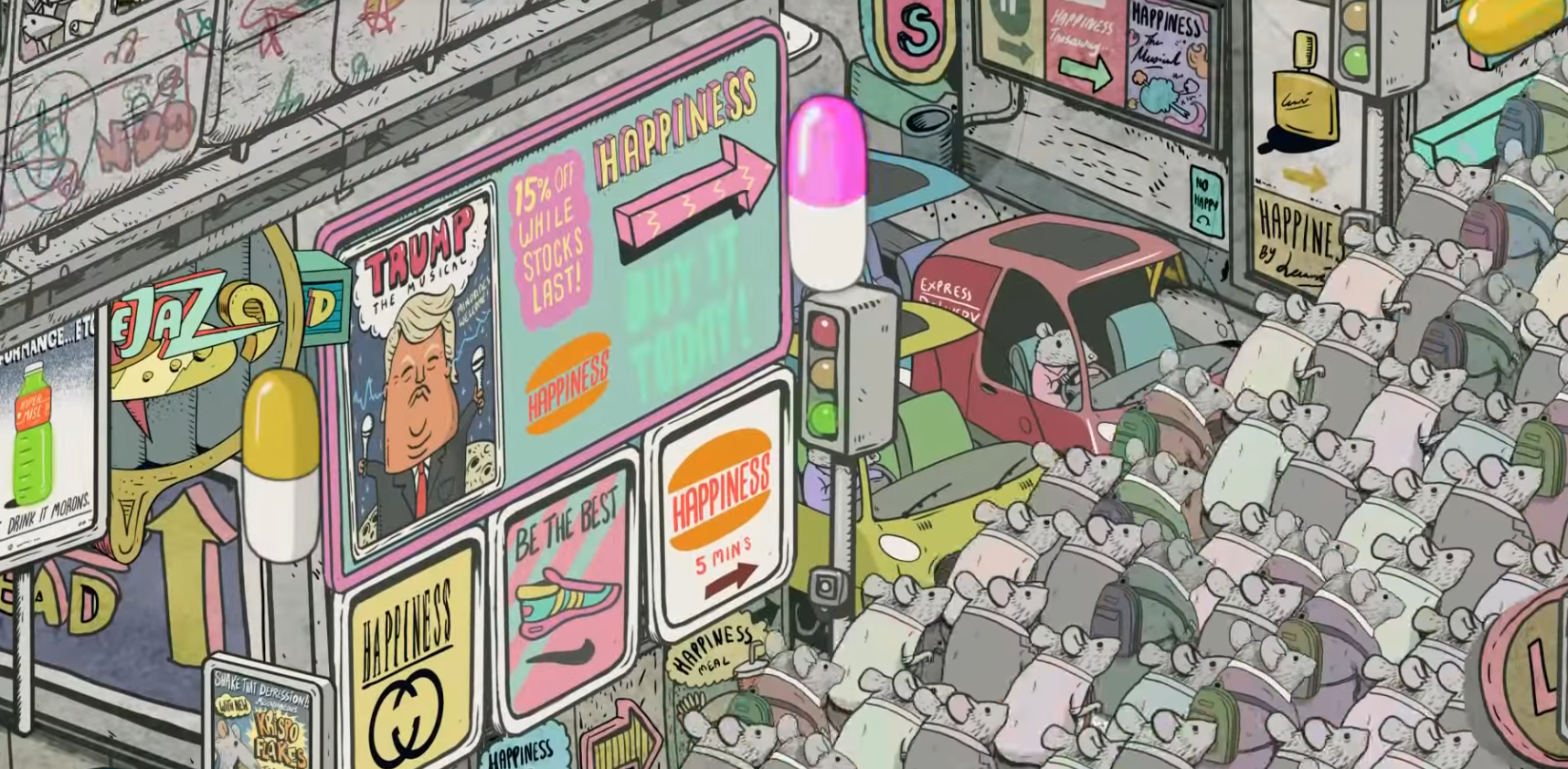
Dieter Rams is sad about design and content.
A world of fleeting content and over design? Dieter Rams thinks so.
”If I had to do it over again, I would not want to be a designer. There are too many unnecessary products in this world.”
-Dieter Rams
The movie “Rams” by Gary Hustwit is now screening at various theaters worldwide. In Hustwit’s latest film, Dieter Rams (pronounced “Rrrahms”), one of the most influential designers of our lifetime, is seen gently leaking despair, resignation and remorse as he looks upon a world filled with over-designed products along with distracting and overstimulating content.
It’s an excess that comes at the expense of diminished experiences for consumers as well as new product designs that fail to address ecological sustainability and other societal problems.
Rams. The movie. A warning for designers and creators?
The documentary “Rams” is both profile and homage to the German industrial designer and architect, Dieter Rams. It also reveals, depending on your point of view:
- A man who either isn’t adapting with the times, the evolution of product design and the business-centric use of content like an increasingly obsolete Willy Loman of design…
- A man tenaciously clinging to the ten good design principles he’s known for, like Moses delivering the 10 Commandments, yet finding his tablet commandments ignored and his followers straying…
- Or he’s just saying to content creators, “Sigh, haven’t you learned anything!?” and is simply pitying an industry that, while moving forward has lost its way and abandoned long-term-thinking about the repercussion of their creation decisions for users and humanity as a whole
It also reminds me like my raison d’être first post for Content + Mindfulness. Here’s another creator, looking past their immediate craft and skills to become increasingly concerned about the rippling consequences of their creations.
As content (both written and visual) can be exploited and become self-serving, Rams sees the same happening with information and experiences delivered through design.
Does Dieter Rams have followers of his work or just fans?
A follower tries to live up to the principles of the leader or organization. Meanwhile, a fan is more focused on seeking association or to identify with popular ideas rather adopting values. Fans, like leafs, tend to drift from principles, pushed by the distracting winds of the new and the simply popular. As designers and content creators try to seek new and innovative executions, those “winds” take them further from core truths.
Based on the documentary and other coverage I would lean towards Rams as Moses. I don’t think he’s offended by change, but more lamenting content creators and the design world who are abandoning principles he believes was meant to lift humankind and not simply to overstimulate humans or provide fleeting joy. He sees his followers moving towards crafting experiences full of bells and whistles than helping users have meaningful, connective experiences and delights.
Many have walked away from Dieter Rams only to return.
One positive note. As Sophie Lovell, the Rams book biographer noted, designers in the 70s and 80s previously abandoned Rams’ design principles and began to overdesign. Many realizing their mistake, rediscovered Rams and his philosophy. It’s possible the“fan” cycle will likely repeat again and again as designers walk away from Rams like a teen asserting their independence from their parents only to eventually accept the wisdom they rebelled against and become their parents.
A world of consumerism, clutter and overdosing. Rams is tired of talking about it.
You can see that surrendered demeanor in some of the limited interviews he’s given – or even his appearance in Hustwit’s previous movie, Objectified. Maybe the emotion I saw in the Hustwit movies that’s coming from Rams is not so much surrender, but anger. But like his products, that presentation of anger emerges from him crafted, elegant and refined as any other stereotypical product design born of german engineering. In other words, the emotional “F-ck off” he feels to unbridled consumerism, the design industry and the world is created and shaped through his restrained personality and excreted from him as quiet, understated but elegant despair.
His resignation to these ascendant forces is one of the reasons he’s announced he isn’t giving any interviews.
After all, why should he? The design and content sins he’s tried to express are already in writing and well-known to anyone in the design industry: his 10 principles of good design. A quick recap.
Dieter Ram’s The Ten Principles of Good Design
- Good design is innovative
- Good design makes a product useful
- Good design is aesthetic
- Good design makes a product understandable
- Good design is unobtrusive
- Good design is honest
- Good design is long-lasting
- Good design is thorough down to the last detail
- Good design is environmentally friendly
- Good design is as little design as possible
From viewing his principles, then turning to look at most products on today’s retail store shelves, you can empathize as to how he feels design has been exploited to produce excess.
The design life Rams now regrets is still a pretty impressive one.
The former architect and German industrial designer is well known for the inspired product designs he’s created while working for Braun and furniture maker Vitsoe. His creations shaped consumer technology and design trends as American consumerism and product design was hitting its stride in the 1960s.
From coffee makers to shavers to stereos to the Oral B toothbrush to furniture and hundreds of more products, Dieter Rams and his design teams crafted elegant experiences that also brought beauty and functional simplicity to our lives.

Most designers revere Dieter Rams as a design god.
His work has inspired designers and designs at Apple and Facebook. Apple’s Chief Design Officer, Jony Ives, has said that Rams inspired him. And as another designer in the film points, out you can see Ram’s work in the early Apple iPod design through features like the scroll wheel.
Yet the creator of so many products that have inspired the world openly laments the designers and business and content creators who have filled the world with a plethora of design, information and content.
For me, as a former advertising executive and copywriter, it’s would be like David Ogilvy, considered one of the greats in advertising and copy and who wrote a book on principles of advertising to say to me, “you write way too much. It’s blather.” While I didn’t attend the New York City screening with any design peers in tow, but I’m guessing it didn’t feel good for them.
Speaking of God. For those of you who have read Frank Herbert’s Dune, the relationship between Rams and designers reminds me of the relationship between Paul Atreides and the Fremen. Paul became a god to his followers (inhabitants of the planet Arrakis) only to see in the future his rise is the cause that drives his followers to move past him to wreak havoc across the universe in his name and create a tyrannical new order.
Rams. A god that rues what he has wrought?
Paul Atreides from Dune has the supernatural ability to see into the future. In the movie, “Rams” Rams has simply caught up to the vision of the world that’s now moving past him.
It’s a world where product designers, content and interactive experiences have been built by the design industry and content makers to enslave engagement and distract more than to delight.
Consumers now simply toss products and experiences that bore them or just to always possess the newest products. We are exposed to designs and content that are redefining our humanity as they simultaneously mutate our habits. We live, saturated by screens around us that we cannot ignore and, in fact, dutifully pull to our faces every few minutes.
In one moment of the film, Rams goes into an Apple store. He looks at an iPhone with a curious and detached sadness. Another telling moment has him walking on the street while lamenting in voice over that people never take their eyes of their smartphones and don’t look each other in the eye anymore.

I’m reminded of the moment of the Indian from the pollution ad that sheds a tear seeing what man is doing to the land and a resignation he can’t stop it.
Rams is a designer who believes in conscious and efficient minimalism as the key to a delightful product and user experience. So it’s clearly disturbing to him seeing a world where features and content are slapped together and piled on to products to meet some need of the business team like a cook putting together the ingredients of a Big Mac. Rams even expressed as much as that drive to overdesign came to the Braun company when it was purchased by Gillette. Afterwards, Dieter began to butt heads with the product vision of management. Eventually Dieter Rams was removed from direct leadership of the design team until he resigned two years later.
Lessons I took away from the movie Rams.
1. How design or a content experience is delivered will mold behavior.
Or another way to put it: a design starts to design the user.
You’ve likely seen the YouTube video of a baby abducting (spreading apart) her fingers to make a paper magazine bigger. Or watch it here:
Obviously, her short, learned experience with tablets and smartphones is defining her experience and her future interactions with other product and information. Essentially the design and user interface patterns of the iPad are teaching her how to engage and consume other objects in her environment.
The creation of text messages on our phones and the creation of Facebook has redesigned how we engage and view friends. We all have friends that we only talk to on Facebook. Or if they call you on the phone rather than text, it’d better be important.
Products, their design and how they manage content have redesigned us as humans to behave like human phone trees (Dial 1 for sales. Dial 2 for service. Dial 3 if you really need to talk.) to other humans. We are encouraged to slice human interaction by need, value and distance and removing ourselves from actual, organic human engagement.
Perhaps what Rams also laments is that technology, design and content, no longer simply delivers satisfaction. It is now designed to demand too personal or behavioral sacrifices for that satisfaction. While a smartly designed iPad or device or IOT (Internet of Things) product helps us gain a better experience with machines or content, little by little, we lose the ability to connect to the real world and real people.
We are redesigned by our designs.
2. Design and content clutter is the mortal enemy of focus.
The concept of minimalism is essentially about keeping need, satisfaction and resources closely in check so every element has a purpose. It’s like building something but sticking to a lean budget. That’s not about being cheap but being strong about supporting things that matter and that will give you the most joy.
From my understanding of Rams, that is his drive for a clutter-free experience. To have only the elements in the design or experience that give you the most joy or satisfaction. When we cut the extraneous, we can focus more and deeply on what matters. In the age of clutter in content and design, it becomes harder to invest or mine deeper value in anything.
I would liken it to too many people shouting in a room. It’s hard to focus on a single voice. You either need to ignore all or triage and sample fleeting bits from the cacophony of messages you get.
3. Designing throw-away content and design experiences drive value apathy.
To be expendable by definition means, it’s not worth keeping. So what does that mean for product design if we are now so willing to throw products away?
Dieter Rams is known for saying that “good design is as little design as possible.” But in seeing how consumers nonchalantly toss working phones because they can (a sin to one of Rams’ design principles), it doesn’t appreciate the value of the products we have. Each product is only a fleeting stand-in to the next, new and fleeting experience.
Because we have an overabundance of devices and content, Fast Company reported that Rams has tweaked his previous message a bit. “Less would be better everywhere,” Rams now says.
4. Just because you can, doesn’t mean you do.
I remember when desktop publishing came in and replace the old-school typesetters. Designers and art directors went nuts on all the fonts available. Often making choices more in alignment with what was currently cool or self-pleasuring than appropriate to the message or experience. Because of a lack of vision or principles driven by experience or conviction, it is tempting to simply be led by the noise and distraction of the possible (which is different from what’s right).
Anyone can design. Anyone can write. Design or write well? That’s another story. The professional in the craft becomes distinguished as they learn when and how to say “no” to every possibility they could execute. Whether you enjoy the idea of minimalism or not, it is the act of making choices as opposed to the all-you-can-eat buffet of content and design. Learning to make choices makes better, valued and less overwhelming content.
5. Self-pleasuring content creation masturbation and excess design is often disguised as creativity or giving the customer “more value.”
If you have seen the movie or know Rams’ principles. I think this is what really disappoints him.
Creativity without discipline is what creates the excess Rams speaks about. It is design and content creation that’s reflecting the creators’ values, whims and personal pleasures instead of showing empathy and an understanding of the true desire and needs of users.
Designer and writers are both guilty of this “look what I can do!” mentality. When we do, we don’t serve our audience. It’s what causes writers to produce screeds and manifestos. Or when I used to read album reviews in Rolling Stone as a kid, I’d need a thesaurus to decipher the writer’s self-satisfying analogies. And this approach drives designs that create products that wouldn’t look out of place in The Cat In the Hat.
Rams laments that good product and content experiences brings forth a pleasure in the world that we can enjoy. This, rather than a stream of design demands, patterns and a torrent of fleeting content that keeps us always moving and distracted like Lucy trying to keep up packaging chocolates on the conveyor belt.
A rushed, almost frantic world that we live in stands in contrast to how we see Rams in his element around his home. A refuge where he savors simple moments like trimming plants with thoughtful attention. His zen-like, tranquil experience only emphasizes how the rest of the world, surrounded and overstimulated by overdesign and a glut of content, is having life’s moment stolen from them by distraction.
Side note: his interaction with his wife of 50 years, a photographer he met at Braun, is adorable.
Do we have too much content and an over-designed world?
I’d agree with Rams. In doing so, we do a disservice to the public, particularly consumers.
Content creators like writers and designers have a job to give the audience what it needs. And to serve as user-centric gatekeepers. We must be mindful not overwhelm them with so many options they don’t know what to do. Or cause users to lose the ability to value the pleasure of the moment.
It’s also about giving design purpose beyond what Rams calls “beautification (just making something look cool)” Design is really about solving problems. And from the movie, Rams believes that also includes solving usability issues a user may not be consciously aware of. For instance, in response to a student, he chastises car companies for their focus on making faster, cooler cars. When they need to focus design to making cars usable in a way that people will appreciate and work with population needs 20 years from now.
The movie Rams is a short movie (less than 70 minutes). Yet like his designs, the minimal approach helps you to focus and enjoy the experience. You should see it.
Hey, I wrote a book about being mindful in the new age of content.
Does This News Make You Look Fat? A book about media consumption and how the way we consume it makes us intellectually obese. Preview or buy the ebook at Amazon.
In the documentary Rams, see the brilliance and frustrations of the legendary designer in a world of over design.































